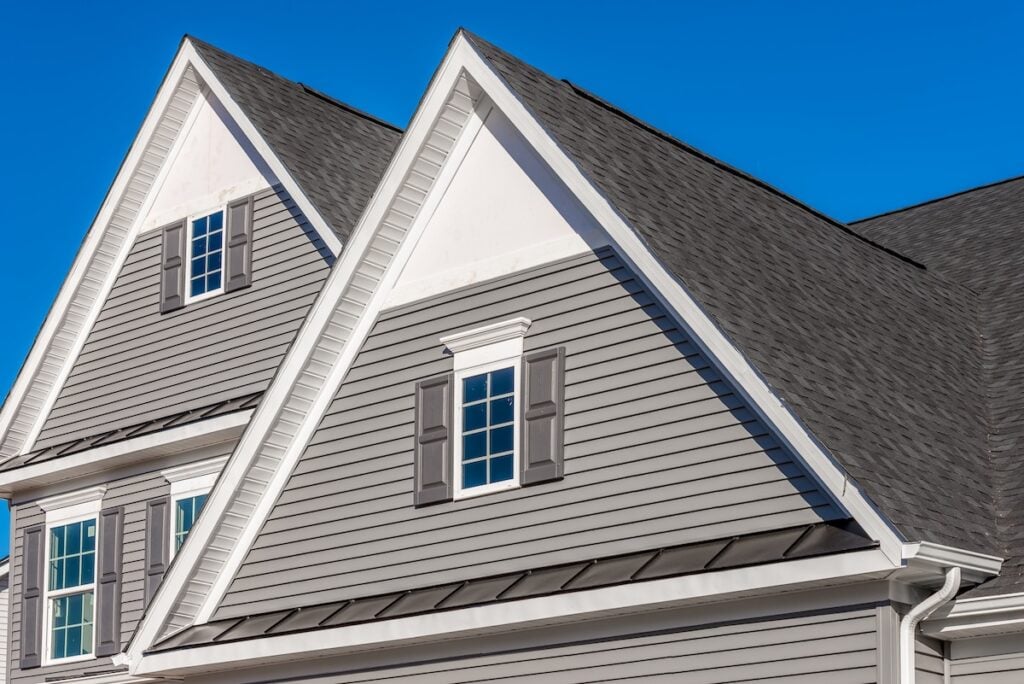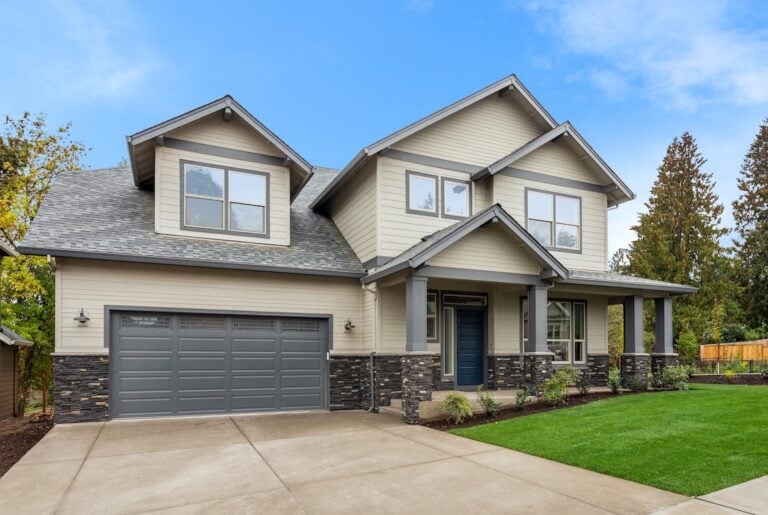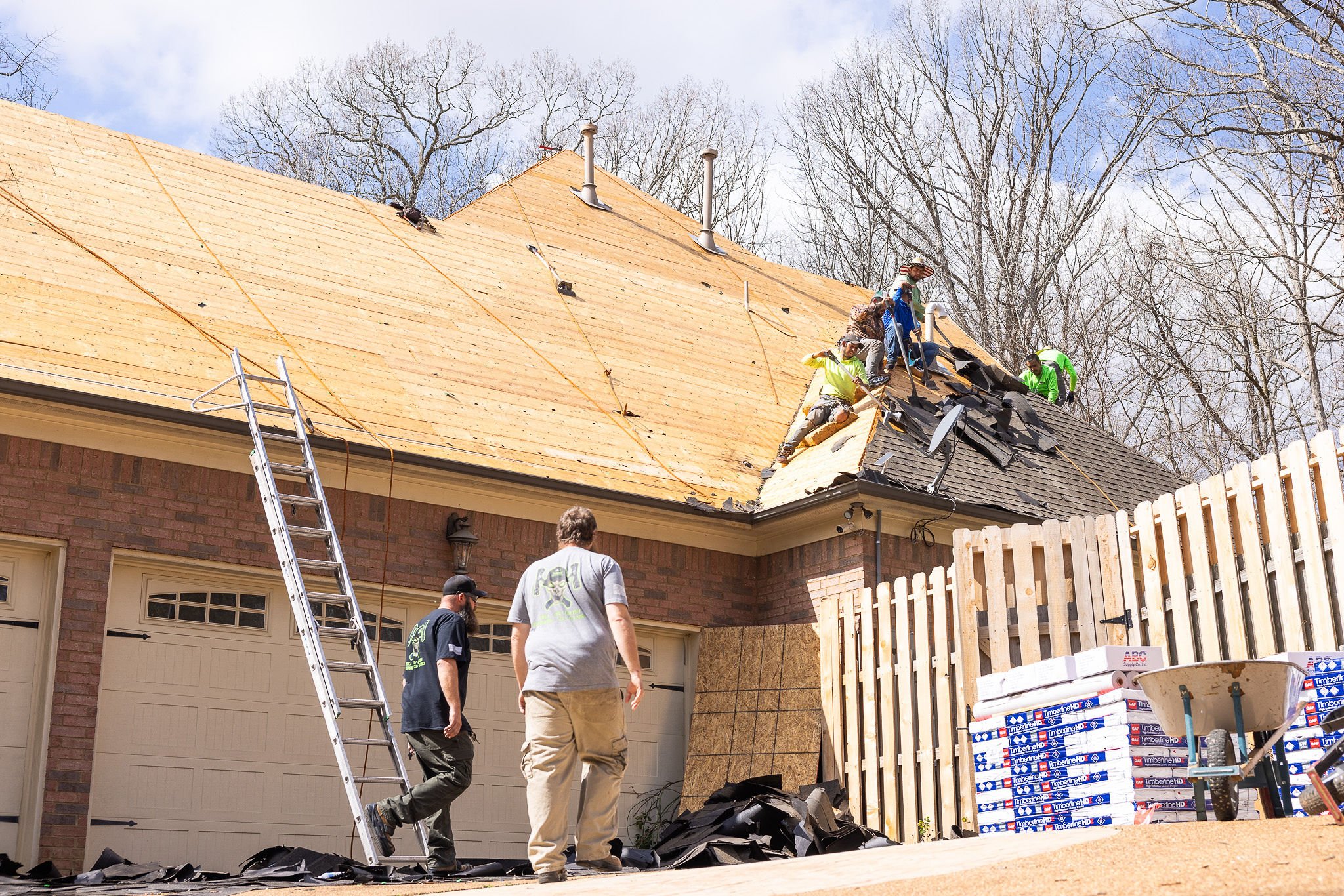When it comes to building or renovating a home, the roof is one of the most significant decisions you’ll make. It not only protects your property from the elements but also defines its architectural style. If you’re exploring options, you may be interested in the classic gable roof. As experts in residential roofing, we know that understanding your choices is the first step toward a sound investment.
The gable roof is one of the most popular and recognizable roof types in the United States, especially in areas with distinct seasons. Its simple, triangular shape is both timeless and highly effective. This guide will walk you through everything you need to know about this classic roofing style.
Here’s a quick look at what we’ll cover:
- The importance and benefits of gable roofs.
- Key variations and design elements.
- Common materials used for construction.
- How to choose the right style for your home.
🏠 Why Is the Gable Roof So Popular?

A gable roof’s design offers a fantastic combination of practicality and aesthetic appeal, making it a go-to choice for homeowners across Tennessee, Arkansas, and Mississippi. Its classic look complements a wide range of home styles, from traditional to modern farmhouse.
This roof style is highly effective at shedding water and snow, which is a major plus in regions that experience heavy rain or snowfall. The steep pitch prevents moisture from pooling, reducing the risk of leaks and water damage over time. Additionally, the space created by the pitched roof, often called an attic or vault, provides excellent ventilation and can even be used for extra storage or living space.
- Excellent Drainage: The sloped design efficiently directs rain and snow off the roof.
- Cost-Effective: Its simple construction requires fewer materials and less labor than more complex designs.
- Versatile Design: Easily adapts to various home styles and can be customized with different pitches and materials.
- Good Ventilation: The attic space beneath the roof allows for natural airflow, helping to regulate your home’s temperature.
📋 5 Things to Know About Gable Roofs

The simple triangular shape of a gable roof is just the beginning. There are several variations and important factors to consider before deciding if this style is right for your home.
Here are five key things every homeowner should know about the gable roof.
1. It Comes in Several Styles
Not all gable roofs are the same. The design can be adapted to fit different architectural needs and aesthetic preferences, offering flexibility for your home’s look.
- Side Gable: This is the most basic form, with two equally sized panels pitched at an angle. The triangular gables are at the sides of the house.
- Front Gable: Often seen on Colonial-style homes, the front gable is placed at the entrance of the house, adding a prominent design feature.
- Cross Gable: This design consists of two or more gable rooflines that intersect, often at a right angle. It’s common for homes with more complex layouts.
2. The Pitch Matters a Lot
The “pitch” refers to the steepness of the roof. This is a critical factor that affects both the roof’s appearance and its performance, especially in different weather conditions.
- Low Pitch: A gentler slope can create a modern, subtle look but may be less effective at shedding heavy rain or snow.
- High Pitch: A steeper roof is excellent for drainage and creates more attic space, but it can be more expensive to construct.
3. You Have Many Material Options
One of the great things about a gable roof is its compatibility with a wide range of roofing materials. This allows you to balance your budget, desired lifespan, and aesthetic goals.
- Asphalt Shingles: A popular and affordable option, available in many colors and styles. They are durable and relatively easy to install.
- Metal Roofing: Known for its longevity and durability, metal is a great choice for withstanding harsh weather. It offers a modern aesthetic and can improve energy efficiency.
- Slate or Tile: These premium materials offer a sophisticated look and can last a lifetime, but they come at a higher cost.
4. It Offers Extra Space
The triangular shape of a gable roof naturally creates an open area at the top of your house. This space offers practical benefits that can increase your home’s value and functionality.
- Attic Storage: The most common use for this space is storage. You can easily add flooring to create a convenient spot for seasonal items.
- Vaulted Ceilings: By forgoing a traditional attic, you can create dramatic vaulted ceilings in the rooms below, making them feel larger and more open.
5. Ventilation is a Key Advantage
Proper ventilation is crucial for a healthy and energy-efficient home, and gable roofs are particularly good at providing it. This helps regulate temperature and prevent moisture buildup.
- Gable Vents: Vents can be installed on the gable ends of the roof to allow hot, moist air to escape the attic space.
- Ridge Vents: These are installed along the peak of the roof to provide continuous, efficient ventilation. This helps lower cooling costs in the summer and prevents ice dams in the winter.
🛠️ Common Gable Roof Materials and Their Benefits

Choosing the right material for your gable roof is just as important as selecting the style itself. The material will impact your home’s durability, appearance, and long-term maintenance costs.
Here are some of the most common materials used for gable roofs and what makes them a good choice.
- Asphalt Shingles: This is by far the most popular roofing material in North America. Modern asphalt shingles are durable, affordable, and come in a vast array of colors. As a GAF Master Elite Contractor, we know that high-quality architectural shingles can provide excellent protection and curb appeal for decades.
- Metal Roofing: Once reserved for commercial buildings or rustic barns, metal roofing is now a top choice for residential homes. It is incredibly durable, fire-resistant, and energy-efficient. A metal gable roof can last 50 years or more with minimal maintenance, making it a smart long-term investment.
- Wood Shakes: For a natural, rustic look, wood shakes are an attractive option. They are typically made from cedar and offer good insulation. However, they require more maintenance than other materials and may not be suitable for areas with high fire risk.
- Slate Tiles: Nothing beats the timeless elegance of a slate roof. Slate is a natural stone that is incredibly durable, fireproof, and can last for over a century. While it is one of the most expensive options, its longevity and classic beauty are unmatched.
✅ Ready for Your New Roof?
A gable roof offers a fantastic blend of style, function, and value. Its proven design sheds water effectively, provides opportunities for extra space and ventilation, and can be customized to fit your home’s unique character. By understanding the different styles, pitch options, and materials available, you can make an informed decision that protects your home for years to come.
If you’re considering a new gable roof or need a professional inspection in Tennessee, Arkansas, or Mississippi, our team at Summit Roofing & Restoration is here to help. Contact us today to schedule your free inspection and get a plan that works for you!


